Enhancing product properties with fluid bed and spouted bed technologies
Fluidized bed and spouted bed are among the leading technologies when it comes to improving the physical properties of bulk solids, such as particle size distribution, bulk density, structure and morphology, in order to deliver beneficial application properties like enhanced dispersibility, solubility and flowability. The combination of processes such as drying, granulating and micro encapsulating in a single step provides a cost-effective manufacturing solution.
- Author: Dipl.-Ing. Katja Oppermann, Process Engineer, Process Technology Food, Feed & Fine Chemicals, Glatt Ingenieurtechnik GmbH
- originally published in the trade magazine ‘Asia & Middle East Food Trade (AMEFT)’, issue 03/2017, J.Latka Verlag GmbH
Manufacturers who operate in climatically, geographically or economically demanding regions of the world face a multitude of production-related challenges, including high humidities, coastal climates, extreme temperatures, challenging energy supply, environmental regulations and, in addition, the availability of raw material in isolated or politically volatile countries. As ever, there are also regulatory guidelines – which vary from country to country – and compliance issues that must be addressed.
Therefore, there are two basic questions to ask when it comes to market success. Which technology will help us to reach our goals? And who can provide product development and production expertise as well as global project experience to help us launch products as quickly as possible?
Highly efficient processing
Anyone keen to know whether fluid bed technology is suitable for their specific application might also be interested in how it works. Both fluid bed and spouted bed technologies are based on the principle of fluidizing particles using upward-flowing process gas. In both cases, the velocity of the process gas is crucial. It needs to be higher than the minimal fluidization velocity and below the velocity that would cause pneumatic transport. If the ideal state is reached, bulk solids behave like fluids and are in a fluidized condition – hence the name fluidized bed. Fluidized conditions are generated so that the overall surface of the particles becomes accessible for modifications under highly efficient heat and material transfer conditions caused by the continuous flow of process gas. The apparatus used mainly consists of an inlet gas chamber, a process chamber, a spray system and a filter system. The main difference between fluidized and spouted bed is the design of the process chambers. Spouted bed technology is based on a decreased distribution plate area (spout), which induces higher velocities at a steady process gas flow. Thus, a variety of materials (difficult to fluidize particles or sticky solutions) are able to be processed at defined gas flow characteristics. Fluidized and spouted beds also have different properties in terms of fluid mechanics and process dynamics and they can play a key role in adjusting product attributes to achieve optimal results. Fluidized and spouted bed applications are generated by an apparatus equipped with a spray system. Depending on the raw materials (liquids or fine powders) and spraying solutions (emulsions, suspensions or solutions) used, applications like spray granulation, spray agglomeration and spray microencapsulation (coating or matrixmicroencaspulation) are realizable based on the same process principle.
Solutions for current nutrition trends
Considering current food trends such as nutraceuticals, natural raw ingredients, functional products, on-the-go meal replacements, better-for-you beverages and other products with added health benefits, the optimization of particle design and treatment has become increasingly important. Active micro-components such as vitamins, minerals, flavors and probiotics are normally not able to be incorporated into foodstuffs in their natural state; they have to be protected by matrix- or core shell micro encapsulation (coating). Furthermore, the taste of animal feed ingredients such as essential oils that provide a natural antibacterial effect needs to be enhanced or masked – and the release profiles of active ingredients must be carefully controlled. For cosmetic products, algae or minerals obtained from seashells are currently very popular. To preserve the functional and nutritional properties of precious natural extracts like this and other sensitive ingredients, fluidized bed and spouted bed technologies offer a number of advantages. Short residence times with higher heat and material transfer rates result in gentle handling at low temperatures (30-40°C) for sensitive materials.
Abrasion resistance
Spray granulation can be suitable for dry food additives and encapsulated liquid flavor ingredients. During the granulation process, liquids are sprayed onto fluidized particles which spread on the granule surface, dry and thereby create, layer by layer, a granule of compact and dense structure. The hardness and abrasion resistance of the granules is significantly higher than conventionally dried substances, which means they are dust-free, have very good flowability and are easy to dose.
Perfect solubility
During the agglomeration process, raw materials of fine powder particles are bound together with a liquid to form grain-on-grain structures. Wetting the surface of these particles and subsequent drying causes the powder particles to adhere to each other and form porous agglomerates. The use of high viscosity spray solutions results in the production of larger agglomerate structures, which leads to better dispersibility, makes the product easier to handle and prevents the individual constituents from separating when processed.
Functional surfaces
For nutraceutical applications, functional ingredients can be micro encapsulated into a free-flowing powder or granule that is coated with a millimeter – or even micrometer – thick layer of polymers, proteins or fats, for example, making them resistant to external influences.
Probiotic cultures – if they are added to foods in the form of microcapsules that open or dissolve in a pH-dependent manner – can be protected against gastric acids and digestive enzymes for successful delivery to the required site of action. Film or hot-melt coatings can also improve the release characteristics of active ingredients. A functional film coating not only provides a smooth layer that makes fish oil or krill oil capsules easy to swallow, it also offers a protective barrier against oxygen, light and moisture. Long-term stability, taste or odor masking and targeted release are among the most important benefits.
Modern engineering
For cost reduction purposes, manufacturers are increasingly moving towards average expected capacities and expanding as needed. A medium capacity benefits from the cost-saving advantages of modularity, which is the latest trend in plant engineering. Engineering specialist Glatt, for example, can rely on already proven planning modules – whether it’s the process itself or utility/media supply (air, water, nitrogen, etc.) – owing to the company’s extensive process development experience.
Furthermore, similar requirements from reference projects, such as GMP, hygienic design, fire or explosion protection, can be repurposed in design plans and documentation, which shortens the planning phase. In addition, Glatt also offers an increasing number of modular solutions, such as stainless steel equipment and vessels that are manufactured in Germany according to Western European standards. When the production plant is assembled on site, based on these established principles, quality standards can be guaranteed and any infrastructure-related obstacles can be overcome.
About the author:
Katja Oppermann is a graduate in food technology engineering and is Process Engineer for Process Technology Food, Feed & Fine Chemicals at Glatt Ingenieurtechnik, Weimar, Germany.
Further information on this topic and related topics can also be found in the following publications:
Published article: ‘How to Tame Recalcitrant Ingredients with Technological Processes’ PDF, English
Published article: ‘Spray agglomerating plant-based milk alternatives for optimised product properties’ PDF, English
Published article: ‘The gentle processing of highly volatile oils by fluid bed and spouted bed technology’ PDF, English
Published article: ‘Spray (micro)encapsulation of sensitive substances in matrix form – An overview of essential oil and vitamin case studies’ PDF, English
Published article: ‘Optimizing end products with finely tuned process parameters’ PDF, English


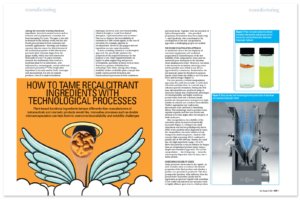
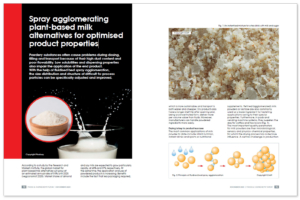
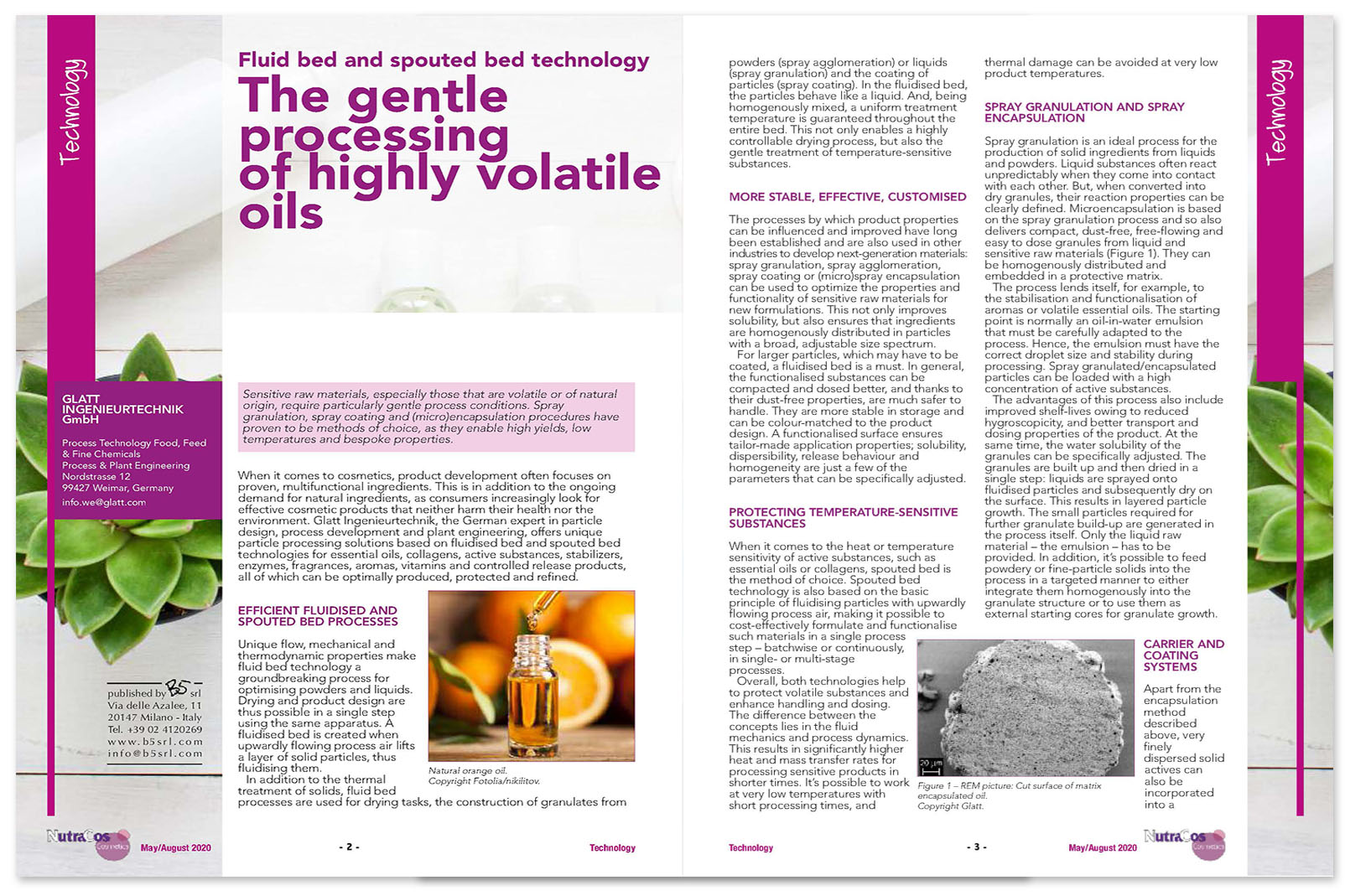
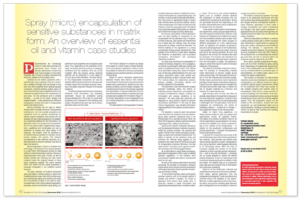
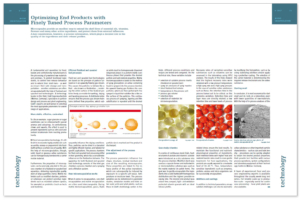
 Copyright: Konradin-Verlag Robert Kohlhammer GmbH
Copyright: Konradin-Verlag Robert Kohlhammer GmbH Copyright: Palladian Publications
Copyright: Palladian Publications